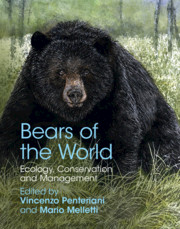Refine search
Actions for selected content:
30 results
Morphological and molecular characterisations of Aphelenchoides vinhphucensis sp. n. associated with rice from Vietnam
-
- Journal:
- Journal of Helminthology / Volume 99 / 2025
- Published online by Cambridge University Press:
- 07 November 2025, e117
-
- Article
-
- You have access
- Open access
- HTML
- Export citation
Chapter 1 - The Scientific Premises for the Imperial artes
- from Part I
-
- Book:
- The <I>artes</I> and the Emergence of a Scientific Culture in the Early Roman Empire
- Published online:
- 22 March 2025
- Print publication:
- 13 February 2025, pp 15-38
-
- Chapter
- Export citation
11 - Crimes against Humanity
- from Part IV - Substantive Law of International Crimes
-
- Book:
- An Introduction to International Criminal Law and Procedure
- Published online:
- 07 November 2024
- Print publication:
- 18 July 2024, pp 215-246
-
- Chapter
- Export citation
Considerations for transferability of health technology assessments: a scoping review of tools, methods, and practices
-
- Journal:
- International Journal of Technology Assessment in Health Care / Volume 38 / Issue 1 / 2022
- Published online by Cambridge University Press:
- 02 November 2022, e78
-
- Article
-
- You have access
- Open access
- HTML
- Export citation

Bears of the World
- Ecology, Conservation and Management
-
- Published online:
- 16 November 2020
- Print publication:
- 26 November 2020
Dialysis and plasmapheresis for schizophrenia: a systematic review
-
- Journal:
- Psychological Medicine / Volume 50 / Issue 8 / June 2020
- Published online by Cambridge University Press:
- 14 May 2020, pp. 1233-1240
-
- Article
- Export citation
11 - Assembling the building blocks: Reviews and their uses
-
- Book:
- Essential Epidemiology
- Published online:
- 31 August 2020
- Print publication:
- 29 November 2019, pp 244-264
-
- Chapter
- Export citation
7 - All that glitters is not gold: The problem of error
-
- Book:
- Essential Epidemiology
- Published online:
- 31 August 2020
- Print publication:
- 29 November 2019, pp 159-184
-
- Chapter
- Export citation
Clustered or dispersed: testing the effect of sampling strategy to census burrow-nesting petrels with varied distributions at sub-Antarctic Marion Island
-
- Journal:
- Antarctic Science / Volume 31 / Issue 5 / October 2019
- Published online by Cambridge University Press:
- 28 August 2019, pp. 231-242
-
- Article
- Export citation
Morphological and molecular data on a new species of Plagiorhynchus Lühe, 1911 (Acanthocephala: Plagiorhynchidae) from the long-billed curlew (Numenius americanus) from northern Mexico
-
- Journal:
- Journal of Helminthology / Volume 94 / 2020
- Published online by Cambridge University Press:
- 22 July 2019, e61
-
- Article
- Export citation
Evaluating the dosimetric consequences of MLC leaf positioning errors in dynamic IMRT treatments
-
- Journal:
- Journal of Radiotherapy in Practice / Volume 18 / Issue 3 / September 2019
- Published online by Cambridge University Press:
- 12 February 2019, pp. 225-231
-
- Article
- Export citation
Kalasinemys, a new xinjiangchelyid turtle from the Late Jurassic of NE Thailand
-
- Journal:
- Geological Magazine / Volume 156 / Issue 10 / October 2019
- Published online by Cambridge University Press:
- 07 January 2019, pp. 1645-1656
-
- Article
- Export citation
NOTES ON TWO COPRINOID FUNGI (BASIDIOMYCOTA, AGARICALES) FROM THE BRAZILIAN SEMIARID REGION
-
- Journal:
- Edinburgh Journal of Botany / Volume 75 / Issue 3 / November 2018
- Published online by Cambridge University Press:
- 21 May 2018, pp. 285-295
- Print publication:
- November 2018
-
- Article
- Export citation
Laryngomalacia: is there an evidence base for management?
-
- Journal:
- The Journal of Laryngology & Otology / Volume 131 / Issue 11 / November 2017
- Published online by Cambridge University Press:
- 25 October 2017, pp. 946-954
- Print publication:
- November 2017
-
- Article
- Export citation
A mawsoniid coelacanth (Sarcopterygii: Actinistia) from the Rhaetian (Upper Triassic) of the Peygros quarry, Le Thoronet (Var, southeastern France)
-
- Journal:
- Geological Magazine / Volume 155 / Issue 1 / January 2018
- Published online by Cambridge University Press:
- 02 August 2017, pp. 187-192
-
- Article
- Export citation
CVLT-II Forced Choice Recognition Trial as an Embedded Validity Indicator: A Systematic Review of the Evidence
-
- Journal:
- Journal of the International Neuropsychological Society / Volume 22 / Issue 8 / September 2016
- Published online by Cambridge University Press:
- 13 September 2016, pp. 851-858
-
- Article
- Export citation
Short-term weight gain after adenotonsillectomy in children with obstructive sleep apnoea: systematic review
-
- Journal:
- The Journal of Laryngology & Otology / Volume 130 / Issue 3 / March 2016
- Published online by Cambridge University Press:
- 21 December 2015, pp. 214-218
- Print publication:
- March 2016
-
- Article
- Export citation
Intertidal Echinoderms (Astroidea, Echinoidea, Ophiuroidea) from Hormuz Island in the Strait of Hormuz (Persian Gulf, Iran)
-
- Journal:
- Marine Biodiversity Records / Volume 8 / 2015
- Published online by Cambridge University Press:
- 10 April 2015, e50
- Print publication:
- 2015
-
- Article
- Export citation
Intimacy and sexuality of nursing home residents with dementia: a systematic review
-
- Journal:
- International Psychogeriatrics / Volume 27 / Issue 3 / March 2015
- Published online by Cambridge University Press:
- 10 November 2014, pp. 367-384
-
- Article
- Export citation
Patagonema iubatum gen. nov. and sp. nov. (Nematoda,Oncholaimidae, Octonchinae) from Patagonia sandy beach(Argentina)
-
- Journal:
- Journal of the Marine Biological Association of the United Kingdom / Volume 95 / Issue 1 / February 2015
- Published online by Cambridge University Press:
- 07 August 2014, pp. 101-109
-
- Article
- Export citation
